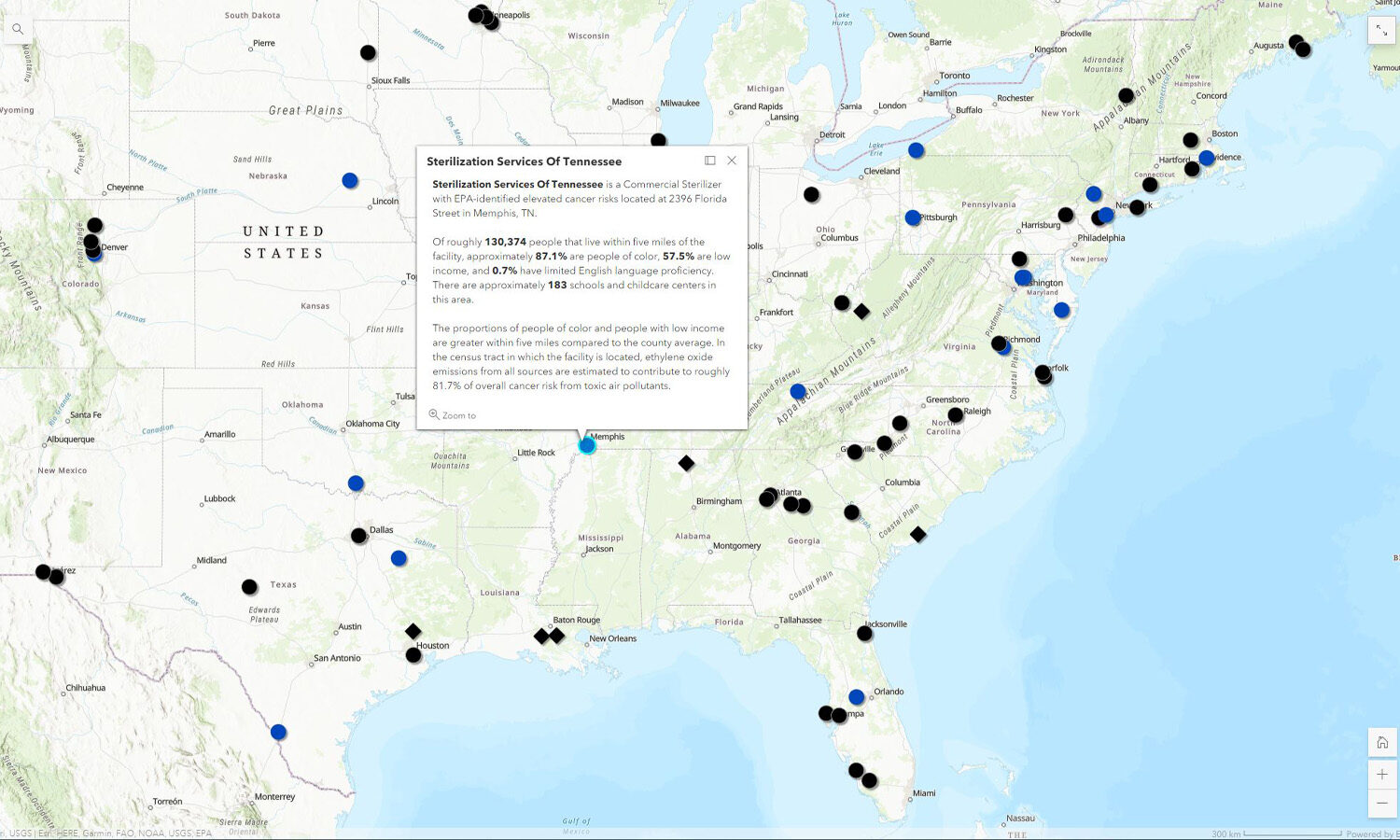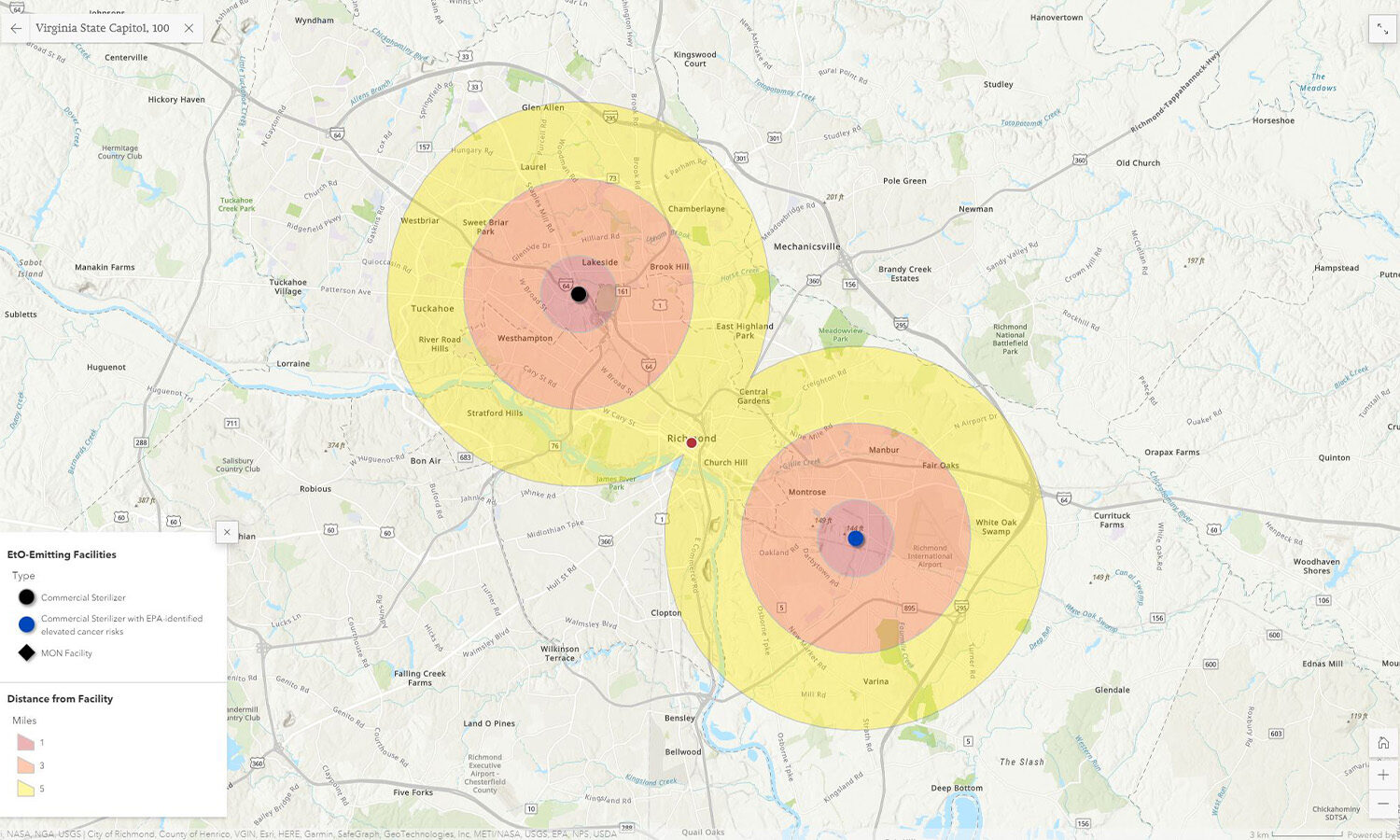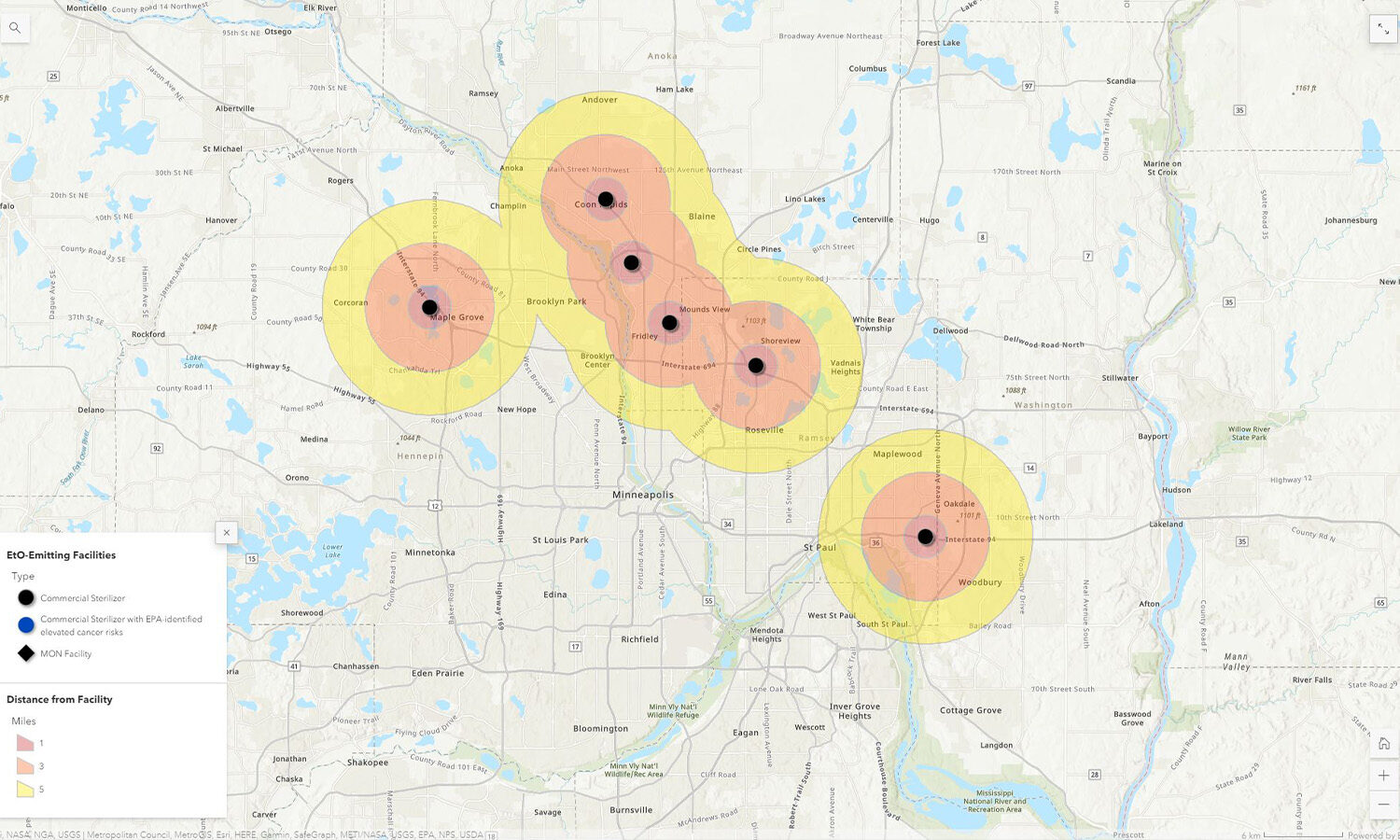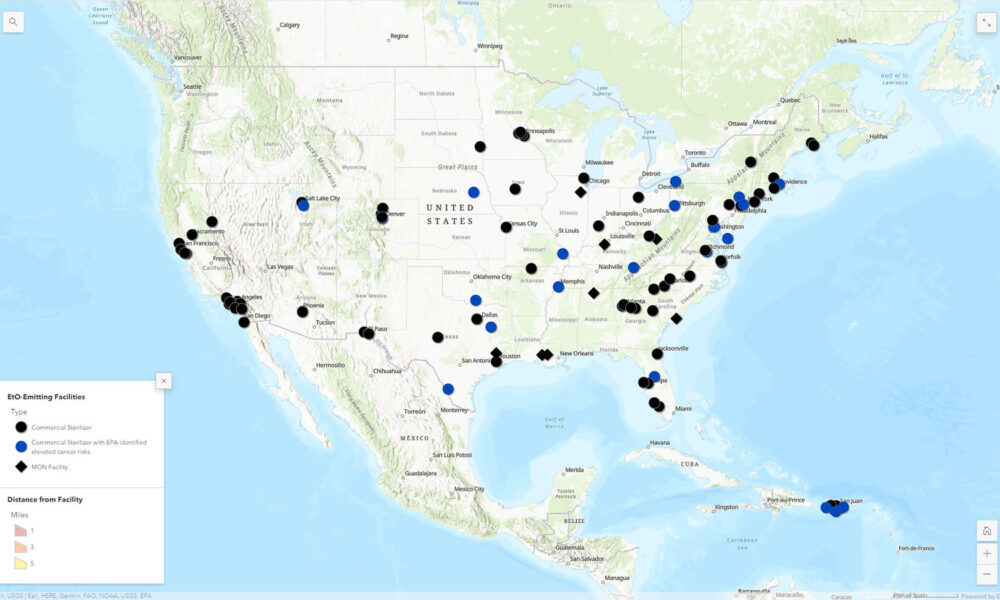Explore the interactive map. A Spanish version of the map is available here.
This week, the Union of Concerned Scientists (UCS) released a report assessing 104 facilities in the United States and Puerto Rico that emit ethylene oxide, a toxic, colorless gas.
Ethylene oxide is used to sterilize medical equipment and some dried food products, and it is also a byproduct of manufacturing other chemicals. It is a potent carcinogen; inhaling ethylene oxide over a long time period is associated with an increased risk of developing cancer. Children are especially at risk of harm from breathing ethylene oxide.
While the US US Environmental Protection Agency (EPA) has known that ethylene oxide is a carcinogen since 2016, the agency currently does not account for these cancer risks in regulations for facilities that use ethylene oxide. The UCS analysis reveals the inequitable toll of this poor regulation: more than 14 million people in the US live within five miles of these facilities, and they are disproportionately communities of color, low-income communities, and non-English speaking communities.
After years of grassroots advocacy and fights in the courts, the EPA finally plans to update regulations for facilities that emit ethylene oxide. As we prepare to call on the EPA to adopt require strong emissions controls for these facilities, this tool provides a resource for learning if one of these facilities is in your or a loved one’s community, and information about who may be most impacted.
Below, you’ll learn more about how to use this tool and how you can take action to protect your community from toxic ethylene oxide emissions.
Find out if and how ethylene oxide may impact your community
The UCS analysis investigates two types of facilities that emit ethylene oxide: commercial sterilizers – those facilities that use ethylene oxide to sterilize medical devices and food products like spices and dried vegetables – and miscellaneous organic chemical manufacturing (MON) facilities.
The mapping tool is easy to use. Each of the blue and black points corresponds to a type of facility, which is described in the key on the bottom lefthand side of the map. The blue circles are commercial sterilizers with ethylene oxide emissions that contribute to elevated cancer risks above “acceptable levels,” according to the EPA.
You can click on each point to see the facility name, type, and street address, as well as the estimated number of people and schools and childcare centers within five miles of the facility. We also provide the estimated percent of the population within five miles that identifies as people of color, people with low income, and people with limited English language proficiency. Finally, for most facilities, we provide an estimate for the air toxics cancer risks attributable to ethylene oxide for the census tracts in which each facility is located. The air toxics cancer risk estimate was developed by the EPA to help understand cancer risks from emissions of nearly 140 toxic air pollutants in the US.

You can also search for specific addresses or locations by clicking the search bar in the top lefthand corner of the map (expand the map if you don’t see it). When you zoom in, you will see that each facility has three circles around it to show the distance from the facility – red circle (one mile), orange circle (three miles), and yellow circle (five miles). Being within five miles does not necessarily mean that you are breathing unsafe levels of ethylene oxide, but in general, the closer you are to a facility, the higher your risk.
Explore ethylene oxide hotspots
The UCS analysis also identifies – for the first time – sterilizer hotspots. These are areas where two or more commercial sterilizers are located less than 10 miles from each other. People that live, work, or attend school in sterilizer hotspots may be exposed to multiple sources of ethylene oxide.
UCS identified 12 areas in the US with sterilizer hotspots: Atlanta, Baltimore, Dallas-Fort Worth, Denver, El Paso, Los Angeles, Minneapolis-St. Paul, Phoenix, Richmond (Va.), San Jose (Calif.), Temecula (Calif.), and Virginia Beach.


It is important to note that the 104 facilities covered in the analysis are not the only sources of ethylene oxide in the US. In addition to commercial sterilizers and MON facilities, there are at least five other types of facilities that emit this toxic chemical, therefore there are likely other ethylene oxide hotspots not identified on this map.
Take action: Tell the EPA to protect our communities and regulate ethylene oxide
In the coming months, EPA is expected to publish draft rules for facilities that emit ethylene oxide, and the agency needs to hear from the people who are most impacted. Learn more about how to get involved, sign up for updates so you know when the EPA opens the comment period, and get ready to write a comment to the EPA calling for strict emissions controls for commercial sterilizers, and to require fenceline monitoring and proactively provide multilingual information about the risk of ethylene oxide to the communities around these facilities.
You can also spread the word to your neighbors, friends and family, and elected officials by sharing the map and report on your favorite social channels.
Everyone deserves clean air and environmental standards that protect their health and safety. The EPA must listen to the communities exposed to ethylene oxide—and to its own science showing the dangers. The problem is clear, the danger is real, and the agency must act now.

